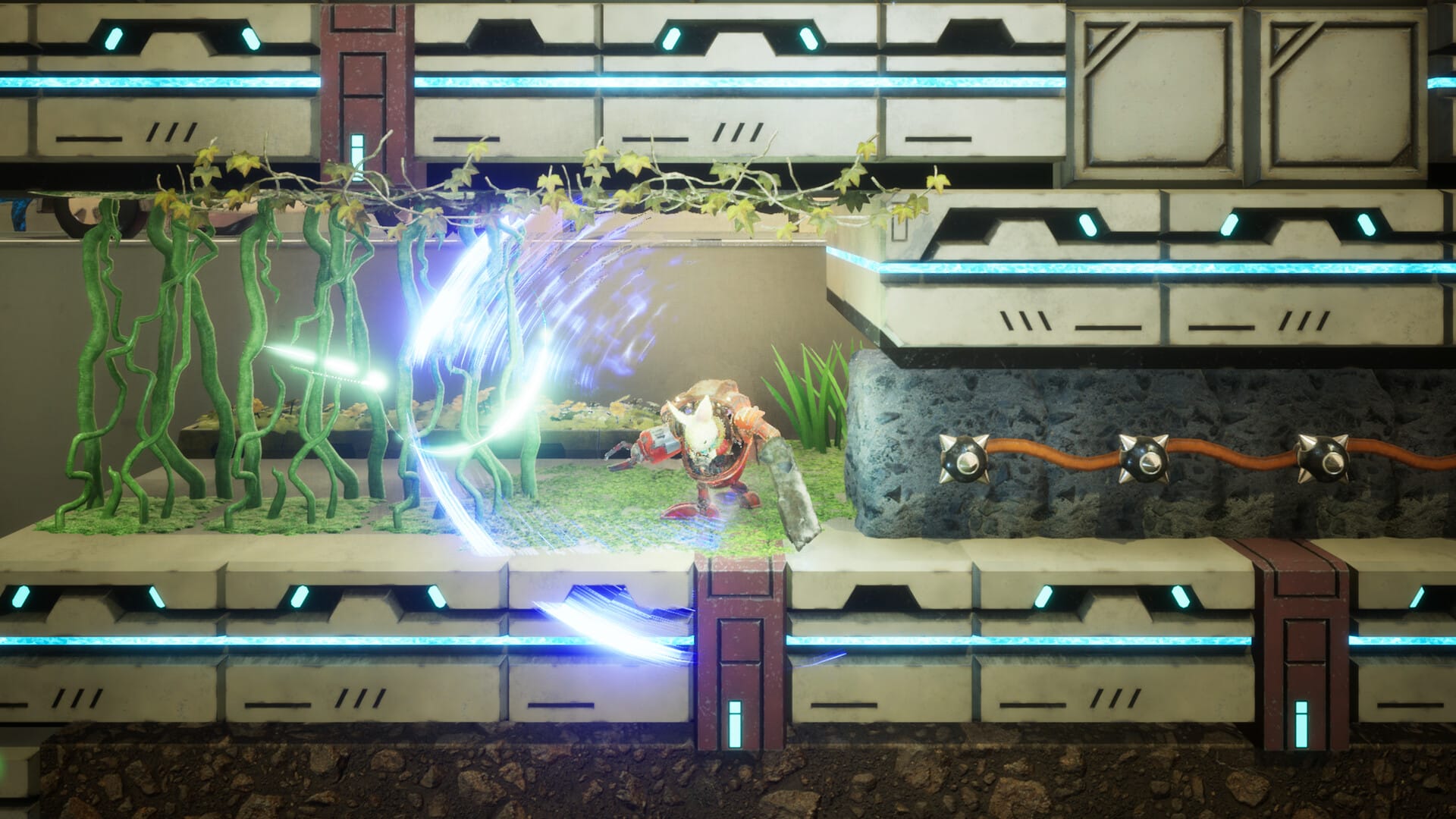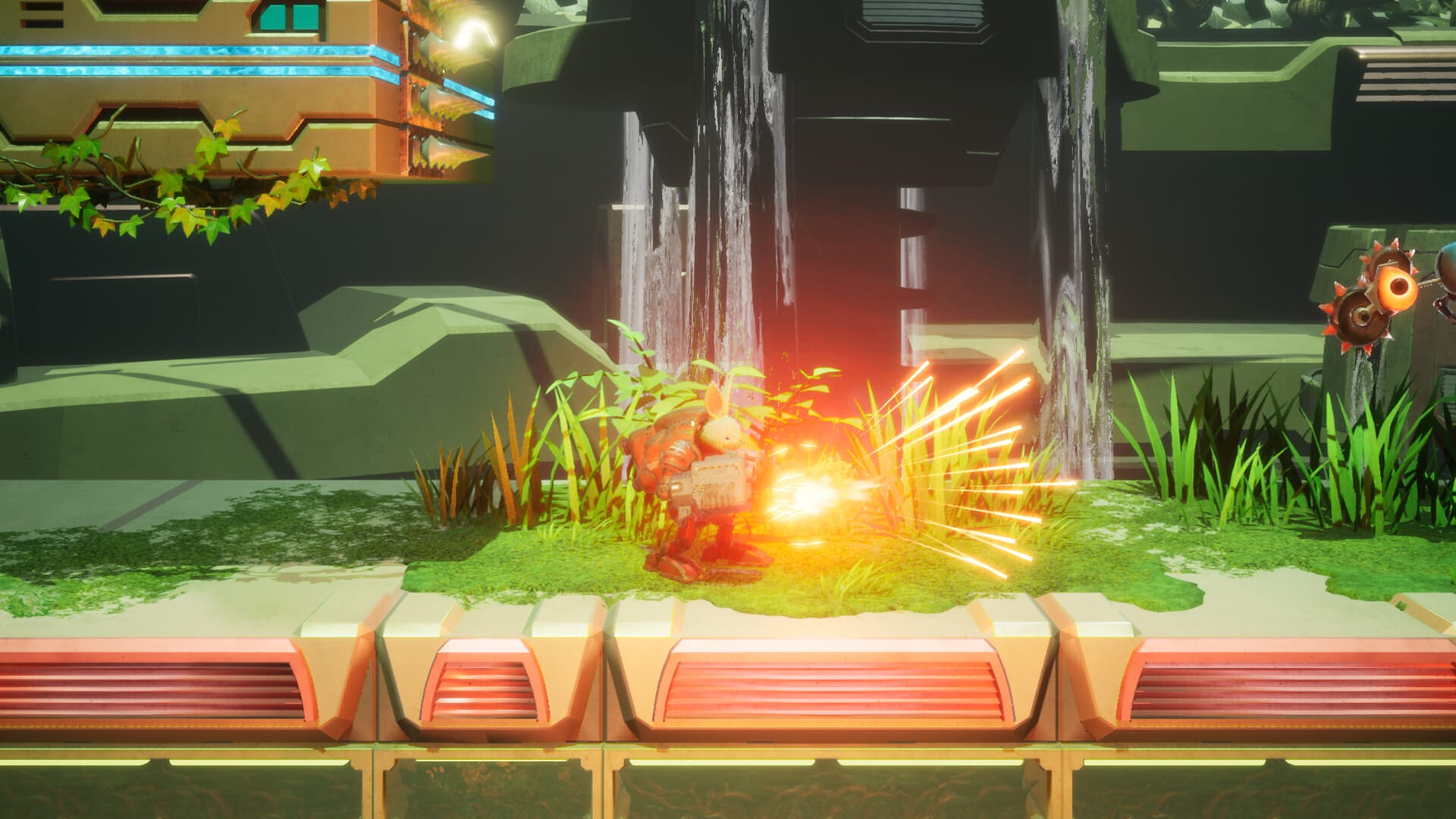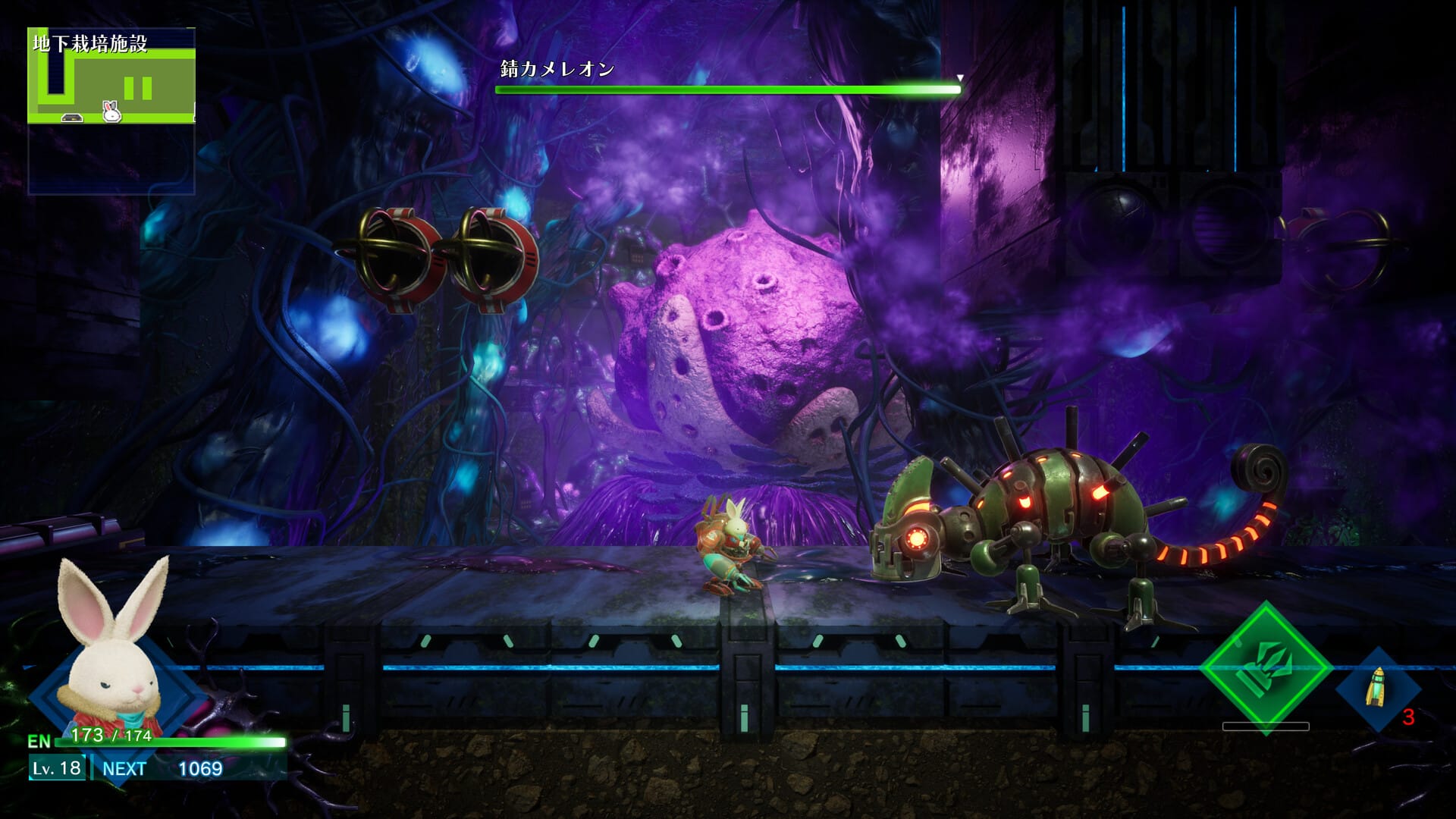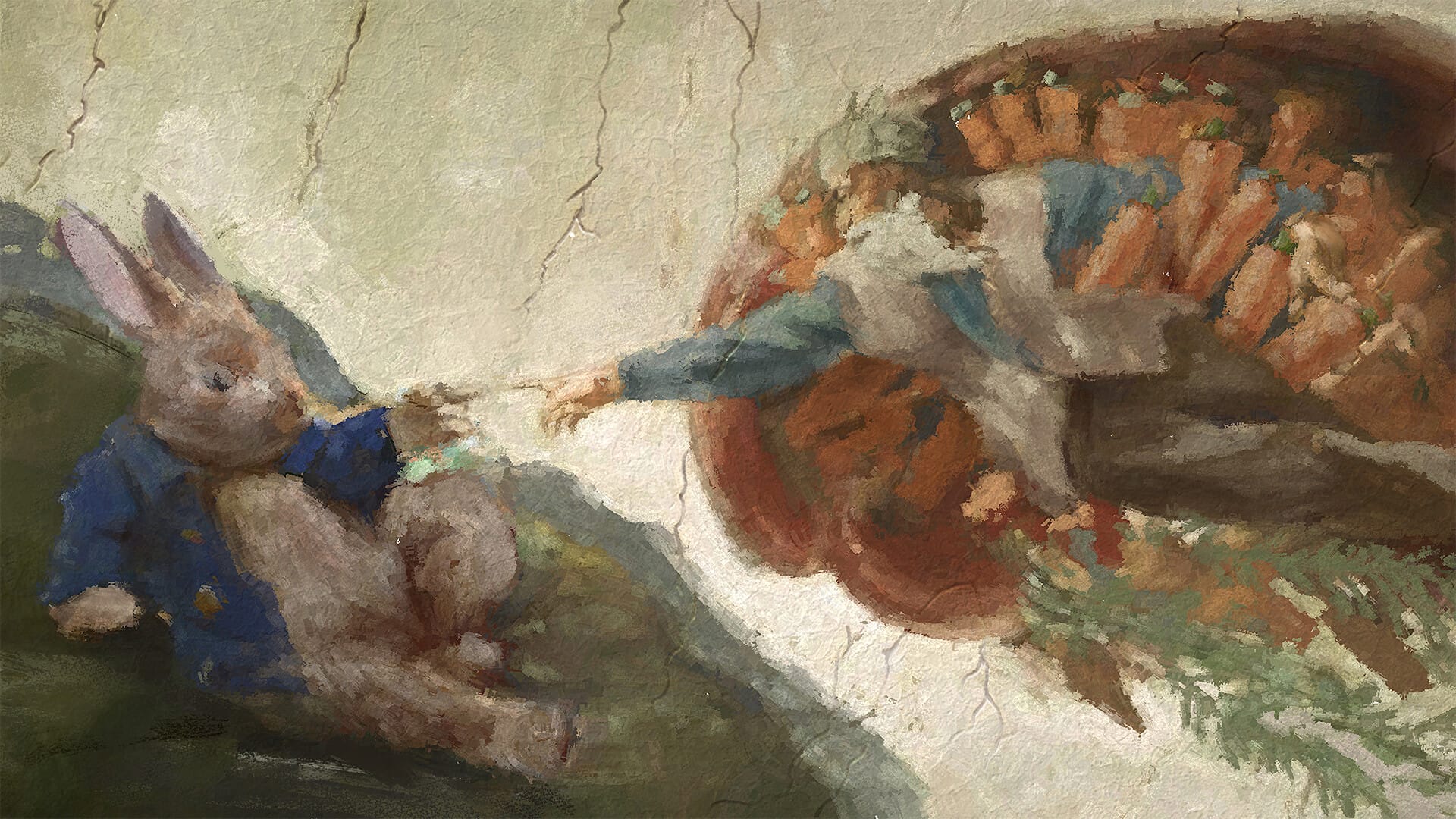
I love it when someone can take beloved classic literature and utilize it in a way that remains faithful to its origins while delivering something completely transformative for their modern audience. Rusty Rabbit is a Metroidvania with a world full of fascinating lore that pays homage to Beatrix Potter’s The Tale of Peter Rabbit while building its own dystopian alternative world. It’s just too bad the rest of the experience fails to reach the same zenith.

Rusty Rabbit has players assuming the role of Stamp, a gruff, cynical middle-aged rabbit with a foul mouth and a love for collecting junk. He spends all his time diving through the world’s garbage-filled underbelly, snatching up what trinkets he can with mech he built of scraps. One day a crew of rust diggers calling themselves the BBs (though none of them seems to know what it stands for) in the employ of a priest shows up. Stamp’s reputation precedes him, and they make him an offer to join. After he declines, they let him know they want to complete their mission without crossing him. After an unwelcome acknowledgment, Stamp resumes his own digging. Along the way, he stumbles across a device that lets him read logs from prior travelers, and he discovers his estranged daughter leaving a trail of breadcrumbs. This begins the old thumper’s mission to find what became of his daughter which will take him deeper than he’s ever gone before.
The game’s narrative feels like it’s set up without too much fumbling. The BBs range from well-written and voiced to passably likable and/or mildly irritating. They’re largely used as foils to present players with upgrades, though they sometimes help push the narrative forward. They ultimately feel underutilized. Nether, the priest, helps add some fuel to the storytelling engine since his role ties heavily into the lore. It’s a shame because frankly, they’re all more likable than Stamp. While Stamp can be offputting, the story is decent. It does a fair job keeping you interested but none of it is ever seat-of-your-pants engaging.

Let’s discuss the game’s lore a bit. In the world of Rusty Rabbit, humanity (referred to as “giants”) is long gone and rabbits have become the primary sentient race on the planet. At some point in their past, the story of Peter Rabbit was taken as a seminal historical text and adapted as the basis for their religion. There are priests stationed in every town and they often discuss Saint Peter, Saint Benjamin, and the evil farmer McGregor who was known to bake rabbits into pies. Stamp even routinely uses McGregor as a pejorative when speaking ill of others. Similar to other IPs like Lies of P, it’s a fun way to see well-known classic works adapted for modern audiences.
With regards to the gameplay, Rusty Rabbit is a fairly bland Metroidvania with areas broken into individual playable stages. Within each stage, alternate paths can be opened using one of four upgradeable weapons to gate your progress for hidden areas. You’ll drill, shoot, slice, and crush enemies and terrain blocks to maneuver through each area. Along the way, you’ll encounter a handful of enemies and special boxes with junk inside. On a rare occasion, you can find special parts used to reassemble cars and gain some more of Stamp’s backstory. Defeating enemies and cracking open boxes will earn you experience and levels. This grants you skill points to enhance the overall experience (though in all honesty, they only occasionally felt significantly impactful). Major narrative points are punctuated by cutscenes with the BBs and the occasional boss battle.

I want to take just a moment to address something I feel is important for any sort of platformer: responsive control. Rusty Rabbit is functional in that regard, but maneuvering Stamp often felt a bit sloshy. It gives the sense that the game wanted players to feel like they were piloting a heavy mechanized unit instead of the agile creature at the helm. To that degree, I’d say they succeeded to the detriment of the experience as a whole.
Between missions (or when you reach checkpoints along your journey) you can return to town. Here, you can have discussions with the priest to learn more of the world’s lore, buy supplies at the General Store, discuss side missions at the bar, craft and customize your loadout at your home, enhance your weapons, and purchase special items at your neighborhood smith, and get to know the townsfolk in the diner for some extra goodies.

By the end of my time with Rusty Rabbit, the cadence began to feel like a list full of checkboxes. Go to town, do everything I can including pick up all the new side missions, then deploy to the next story area. There, I’d try to uncover as much of the map as possible, gathering junk and killing everything in my path to finish side missions faster. I’d unlock the next area, zip back to town, and handle everyone again before rinsing and repeating. The rare difference was getting to build new weaponry if I’d found all the blueprints for it. It was, otherwise, a heavily formulaic experience.
To the game’s credit, each stage was set apart as its own distinct area with a color-coded map to highlight areas you may want to return to. This made it easy to jump in, complete a zone or two, check if my new weapons could access an area, and step away having felt like solid progress was made. Unfortunately, I feel like I must’ve revisited several of those areas a few dozen times before I could write them off.
Rusty Rabbit
Mediocre
Rusty Rabbit is an interesting game that uses a fascinating literary twist to establish its lore. The story has some interesting moments but it doesn’t feel like enough to save the game from itself. Unfortunately, the controls aren’t as responsive as a game in this genre should be and the world design feels very paint-by-numbers. With so many other top-tier titles vying for attention in the same space, it’s hard to consider this a frontrunner. You may give it a chance if you want to experience the world or you’re looking for a simpler Metroidvania.
Pros
- Fantastic lore that makes clever use of classic literature in a unique way
- Varied cast brings some life to the world
Cons
- The main character is unlikable through most of the story
- Extra-curricular events are repetitive and bland as unseasoned popcorn
- The expanded cast is woefully underutilized
- Formulaic to a fault, even for a Metroidvania
This review is based on an early PS5 copy provided by NetEase and NITRO PLUS. Rusty Rabbit comes out on April 17, 2025.
